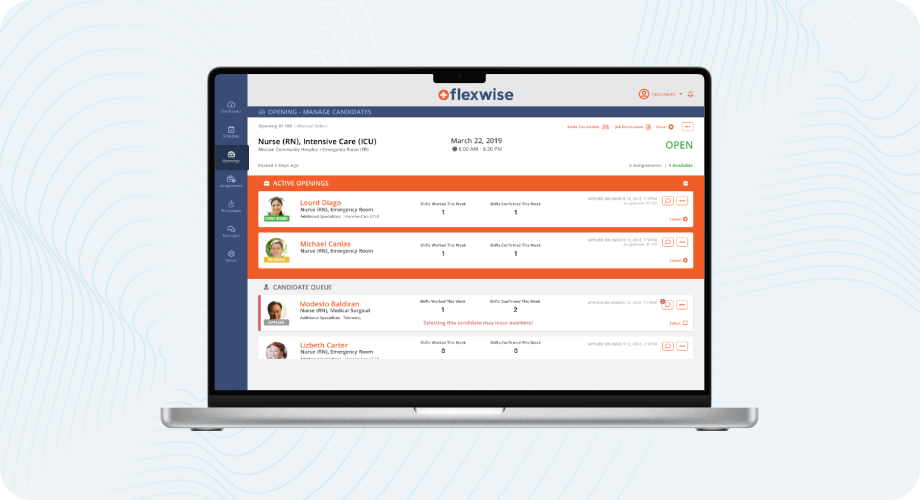Case Study of Flexwise: Custom Web App DevOps Migration for Healthcare
Flexwise is a U.S. healthcare workforce management platform focused on efficient staff scheduling and operations. IT Craft modernized its legacy system by migrating to a secure, cloud-native infrastructure that ensures HIPAA compliance and enables agile releases.
- Team 5 team members
- Type DevOps & Cloud Infrastructure Transformation
- Industry Healthcare
- Platforms Web
About the project with Flexwise Health
IT Craft collaborated with Flexwise to move on from bare-metal traditional infrastructure to today’s cloud-native one. The team refactored the system to microservices, moved to Amazon EKS, and adopted GitOps to simplify automated infrastructure and deployment management.
The new infrastructure offers a failure-resistant and scalable platform and streamlined CI/DC pipelines. The infrastructure offers HIPAA-compliant data processing so that highly private healthcare data can be processed securely.
The client needed to construct an agile, strong, and secure infrastructure, one that was capable of coping with ongoing developments and fast turnaround on changes on market requirements.
The ultimate goal was to improve infrastructure, cut recurring expenses, expedite timelines on delivery, and achieve smooth convergence to healthcare regulations.

Client’s expectations
- Transitioning from traditional infrastructure to cloud architecture
- Become HIPAA compliant to manage patient information securely
- Utilize CI/CD and GitOps to deliver features fast and consistently
- Enable infrastructure flexibility to support new development needs
- Build scalable microservices for long-term maintainability
Technologies:
 AWS
AWS Kubernetes
Kubernetes Terraform
Terraform Jenkins
Jenkins ArgoCD
ArgoCD GitHub
GitHub Prometheus
Prometheus Grafana
Grafana
We delivered:
- Full migration to Amazon EKS with GitOps (ArgoCD) and IaC (Terraform)
- Refactored monolithic app into secure microservices architecture
- CI/CD pipelines via Jenkins with seamless Day-2 operations
- Infrastructure designed to meet HIPAA and zero-trust security standards
- Monitoring and observability with Prometheus and Grafana
- Configured environments to support machine learning components
To bring the solution to life, IT Craft applied its expertise as web application developers to build a secure, scalable infrastructure tailored to the needs of a healthcare platform.

Results of the collaboration
Flexwise was able to upgrade to a new, state-of-the-art, cloud-native architecture that enabled rapid rollout, lower infrastructure cost, and full alignment to healthcare data regulations. The new system was a solid foundation on which to build further innovation in workforce management.
Key outcomes included:
- 80% increase in system fault tolerance
- Up to 35% reduction in infrastructure scaling costs
- 2x faster release cycles enabled by GitOps workflows
- 99.9% security coverage in line with HIPAA standards
- Cloud architecture is ready to support future ML integrations
- Positive impact on investor confidence, resulting in $6M funding
IT Craft delivered a DevOps-powered transformation aligned with industry regulations and long-term scalability to support secure growth and operational agility in healthcare tech.
Explore how our DevOps services can help your platform evolve with confidence.